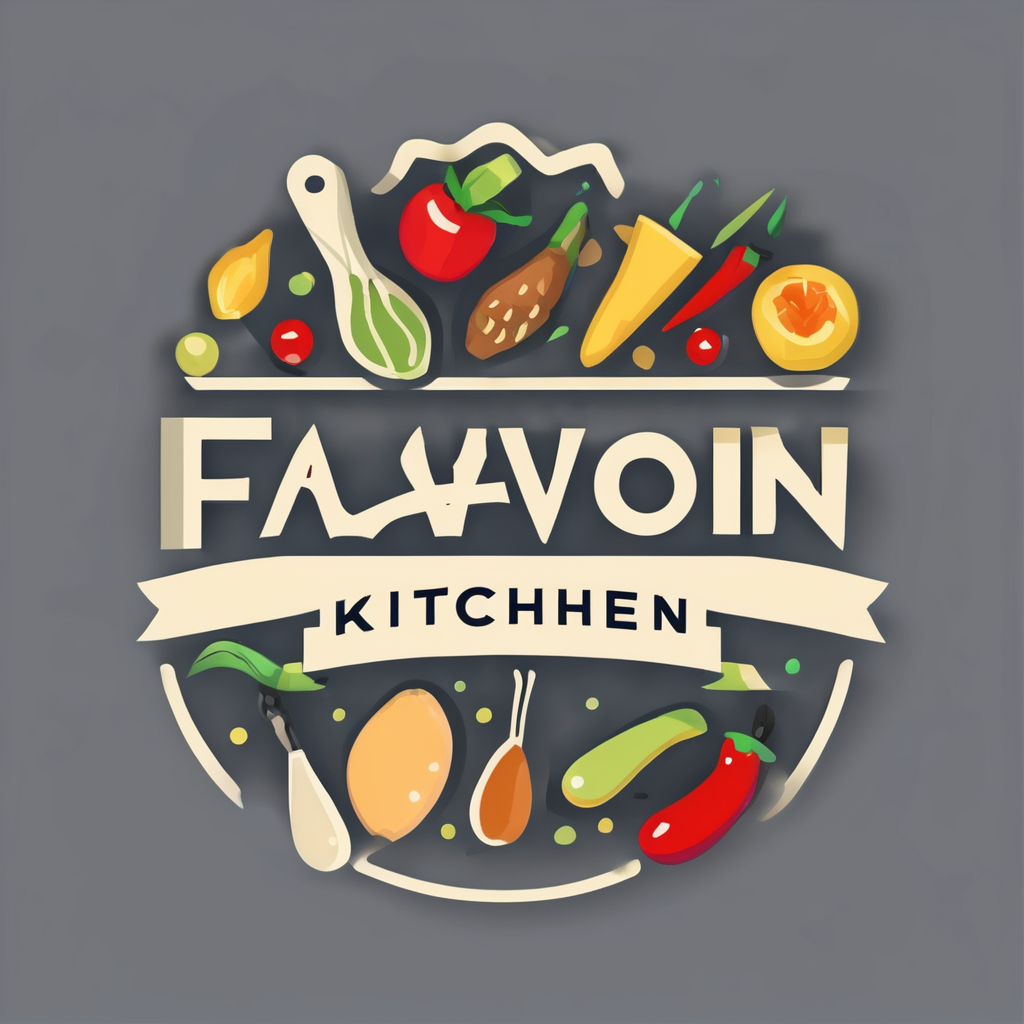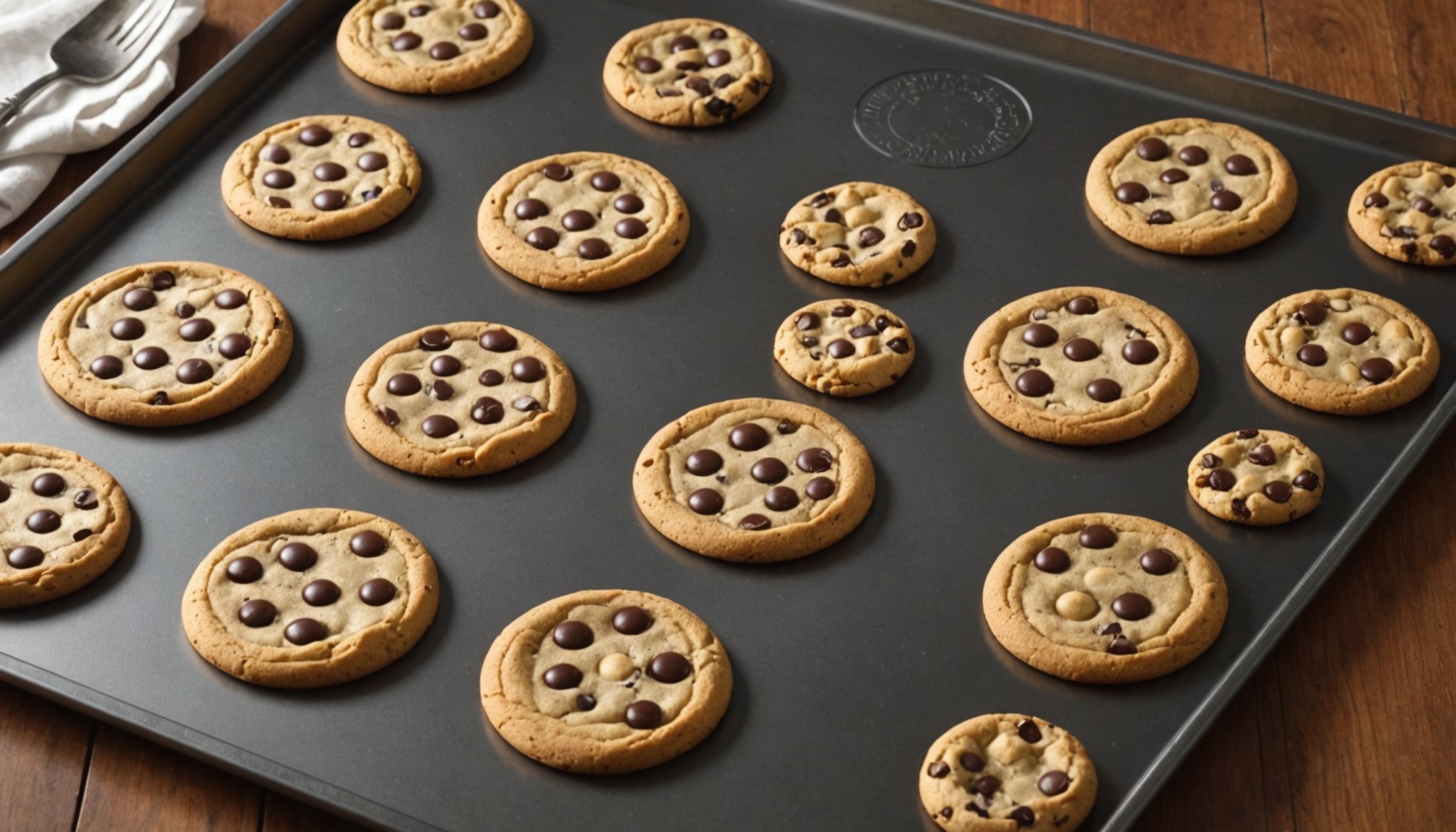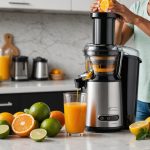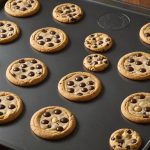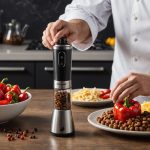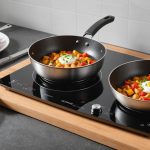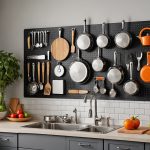The Ultimate Guide to Choosing the Best Material for Durable Cookie Sheets
When it comes to baking, the right tools can make all the difference between a perfectly baked batch of cookies and a disappointing one. One of the most crucial tools in any baker’s arsenal is the humble cookie sheet, or baking sheet. But with so many materials and options available, how do you choose the best one for your baking needs? Here’s a comprehensive guide to help you make the right choice.
Understanding the Importance of Material in Baking Sheets
The material of your baking sheet is paramount because it affects the heat distribution, durability, and overall performance of the sheet. Here are some key factors to consider:
In the same genre : Discover the Ultimate Natural Degreaser for Your Kitchen Appliances: Effective Cleaning Solutions Revealed!
Heat Distribution
Heat distribution is critical for baking. Materials that conduct heat evenly ensure that your cookies, cakes, and roasted vegetables are cooked consistently. Aluminum and aluminized steel are top choices for this reason. For example, the Nordic Ware Natural Aluminum Half Sheet Pan is praised for its even heat distribution, making it ideal for baking cookies and cakes[1][2].
Durability
A durable baking sheet can withstand the rigors of frequent use and cleaning. Thicker, lower-gauge materials are generally more durable and less prone to warping. The Chicago Metallic baking sheet, made from aluminized steel, is a great example of a durable option that resists warping and performs well over time[1].
Also read : Top Materials for Heat-Resistant Oven Gloves: Which One Reigns Supreme?
Ease of Use
The ease of use includes how easily food releases from the sheet and how comfortable it is to handle. Nonstick coatings can make food release easier, but they may not be as durable as uncoated sheets. The King Arthur Sheet Pans, coated with Americoat, a nonstick, non-toxic coating, are highly recommended for their ease of use and superior baking performance[4].
Best Materials for Baking Sheets
Aluminum
Aluminum is a favorite among professional bakers due to its excellent heat conductivity and light weight. Here are some pros and cons:
- Pros:
- Excellent heat distribution
- Lightweight and easy to handle
- Generally less expensive than other materials
- Favored by professional bakers and pastry chefs[2]
- Cons:
- Thinner sheets can warp over time
- May require more maintenance to prevent oxidation
The Nordic Ware Naturals for Sur La Table Half-Sheet Pans are a great example of aluminum baking sheets that provide even, consistent heat and are reinforced with galvanized steel to prevent warping[2].
Aluminized Steel
Aluminized steel combines the best of both worlds: the strength and durability of steel with the heat conductivity of aluminum.
- Pros:
- Durable and resistant to warping
- Excellent heat distribution
- Often comes with a nonstick coating for easy food release
- Can be more affordable than stainless steel or carbon steel options[1]
- Cons:
- May be heavier than aluminum sheets
- Nonstick coatings may degrade over time
The Vollrath baking sheet, made from aluminized steel, is highly praised for its performance and durability. It features tapered edges for efficient stacking and a comfortable, rolled rim for easy handling[1].
Stainless Steel
Stainless steel is another durable option, though it may not conduct heat as well as aluminum or aluminized steel.
- Pros:
- Extremely durable and resistant to scratches and corrosion
- Easy to clean and maintain
- Often dishwasher safe
- Cons:
- Poor heat conductivity compared to aluminum or aluminized steel
- Generally more expensive
While stainless steel baking sheets are available, they are not as commonly recommended for baking cookies due to their poor heat conductivity.
Carbon Steel
Carbon steel is a less common but still viable option for baking sheets.
- Pros:
- Excellent heat retention and distribution
- Can be seasoned for nonstick performance
- Durable and long-lasting
- Cons:
- Requires seasoning and maintenance
- Can be heavy and dense
Carbon steel baking sheets are often used by professional bakers who value their heat retention and durability, but they require more maintenance than other materials.
Key Specs to Consider
When choosing a baking sheet, here are some key specs to look at:
Gauge
The gauge of a baking sheet refers to its thickness. A lower gauge indicates a thicker sheet, which is generally more durable and less prone to warping.
| Material | Gauge | Weight | Dimensions | Broiler-Safe | Dishwasher-Safe | Warranty |
|---|---|---|---|---|---|---|
| Nordic Ware Aluminum | 18 | 1 lb 5.3 oz | 11.8 x 16.6 inches | Unknown | Yes | One year |
| Vollrath Aluminized Steel | Unknown | 2 lbs 4.75 oz | 16.75 x 12 inches | No | Hand-washing recommended | Lifetime |
| King Arthur Americoat | Unknown | Varies | Varies | Yes | Yes | Lifetime |
Dimensions
Ensure the baking sheet fits your oven and meets your baking needs. Standard half-sheet pans are usually around 13 x 18 inches.
Edge Design
A comfortable, rolled edge or tapered rim can make handling the sheet much easier, especially when using oven mitts.
Nonstick Coating
Nonstick coatings can make food release easier, but they may degrade over time. Look for high-quality nonstick coatings like Americoat used in King Arthur Sheet Pans[4].
Broiler and Dishwasher Safety
Check if the baking sheet is broiler-safe and dishwasher-safe to ensure it fits your cleaning and cooking habits.
Practical Insights and Actionable Advice
Choosing the Right Thickness
Opt for a lower gauge (thicker) sheet for durability. However, avoid sheets that are too heavy, as they can be unwieldy. The Nordic Ware Natural Aluminum Half Sheet Pan strikes a good balance between thickness and weight[1].
Maintenance Tips
- Aluminum Sheets: Avoid using abrasive cleaners to prevent oxidation. For nonstick coatings, avoid using metal utensils and abrasive cleaners.
- Aluminized Steel Sheets: Follow the manufacturer’s cleaning instructions. For nonstick coatings, use gentle cleaners and avoid metal utensils.
- Stainless Steel Sheets: These are generally easy to clean and maintain. Use a soft sponge and mild detergent.
Real-World Examples
- Nordic Ware Naturals: These aluminum baking sheets are favored by professional bakers for their even heat distribution and durability. They are reinforced with galvanized steel to prevent warping and come with a limited lifetime warranty[2].
- Vollrath Baking Sheet: Made from aluminized steel, this sheet is known for its heavy-duty construction and comfortable, rolled edge. It performed well in all tests, including baking cookies, cakes, and roasted potatoes[1].
What Bakers Say
- “Aluminum pans provide even, consistent heat and are favored by professional bakers and pastry chefs,” says a reviewer of Nordic Ware Naturals for Sur La Table Half-Sheet Pans[2].
- “The Vollrath baking sheet was an excellent performer, keeping pace with our other two winners with barely any variance in performance,” notes a review from Serious Eats[1].
Choosing the best material for your baking sheets is a crucial decision that can significantly impact your baking results. Here are the key takeaways:
- Aluminum: Excellent heat conductivity, lightweight, but may warp if too thin.
- Aluminized Steel: Durable, excellent heat distribution, and often comes with a nonstick coating.
- Stainless Steel: Durable but poor heat conductivity.
- Carbon Steel: Excellent heat retention, durable, but requires seasoning.
By considering the gauge, dimensions, edge design, and nonstick coating, you can select a baking sheet that meets your needs and enhances your baking experience. Whether you’re a professional baker or a home enthusiast, the right baking sheet can make all the difference in achieving perfectly baked cookies and other treats.
